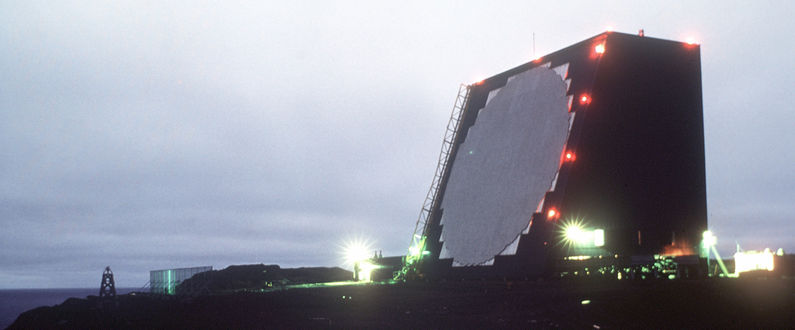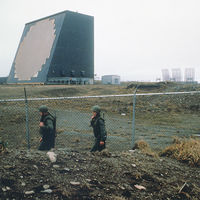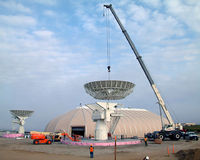Eareckson Air Station
|
Eareckson Air Station (1959-Active) - A Cold War Air Force Radar Station first established in 1959 as Shemya Air Force Station on Shemya Island, Alaska. Built on the site of the abandoned World War II Shemya Army Air Field (1943-1947). Renamed Shemya Air Force Base and then Eareckson Air Station in 1993 after Colonel William O. Eareckson, who commanded bomber operations during the Aleutian Campaign of World War II. Active Radar Station. Shemya Air Force StationEstablished initially in 1959 on Shemya Island, Alaska, with the installation of the FPS-17 space detection radar that went operational in May 1960. Shemya Island was located in the West Aleutians Island chain, closer to the Russian mainland than the U.S. mainland and it provided the best opportunity to monitor the Russian space and missile programs. Other activities on the station included an active airstrip that saw some commercial uses well as military use and some classified projects. The FPS-80 tracking radar was added and went operational on 1 Apr 1962. Both systems were used to monitor Soviet Union space and missile activities through the 1960s and into the 1970s. Responsibility for the site transitioned from USAF Security Service (USAFSS) to the Aerospace Defense Command (ADC), Detachment 2, 9th Aerospace Defense Division in 1962. Both radar sets were replaced by the installation of the FPS-108 Cobra Dane system that went operational in 1977.
Cobra Dane Radar SystemIn July 1973, Raytheon won a contract to build the "Cobra Dane" system on Shemya Island in the Aleutian Islands off the Alaskan coast. The site was completed in 1976 and became operational on 1 Aug 1977 with the FPS-108 phased array radar manned by the 16th Space Control Squadron. The mission was to track Soviet missile tests and to support the Air Force Spacetrack System. a primary mission of monitoring Soviet tests of missiles launched from south-west Russia aimed at the Siberian Kamchatka peninsula. In 1993 Raytheon completed a four year, $60 million, major system modernization program for the Cobra Dane system. The modernization program replaced the original mission computers, peripherals and radar displays and several unsupportable radar hardware subsystems. Most of the operational software (some 300,000 lines of computer code) was rewritten in the ADA programming language. Dual redundant VAX 6000-520 computers were installed to increase reliability. The entire radar front end was retained. In April 1994, Air Force Space Command ceased operation of the Cobra Dane System, and the corollary and secondary missions of early warning and space surveillance were terminated. Cobra Dane continued supporting its primary intelligence mission without interruption, and the early warning and space surveillance mission capabilities were retained within the software for the possibility of future need. The space surveillance mission was suspended by the Air Force in 1994 due to budget constraints, but was reinstated as a limited duty contractor operation in 1999 for protection of the International Space Station and shuttle orbiter flights. The radar resumed full operation in 2002 to support increased spacetrack demands. The radar began its missile defense mission as a result of the Cobra Dane Upgrade program in 2004. This upgrade was largely a software modification, none of the system hardware was changed, but a new communications processor and terminal were installed. CapabilitiesStated range of 2000 miles with a scan width of about 136 degrees. Typical accuracies claimed were 3 meters in range and 0.02 degrees in angle. In 1999, full-power tests focused on objects with altitudes below 600 km demonstrated that Cobra Dane could detect and track objects as small as 5 cm. It can detect objects as small as 4 cm.
Current StatusActive Air Station. Cobra Dane maintained and operated by contractors, no military personnel assigned.
Current StatusActive Air Station Shemya Island, Aleutians West Census Area, Alaska.
See Also: Sources:
Visited: No
| ||||||||||||||||||||||||||||||||||||||||||||||||||


